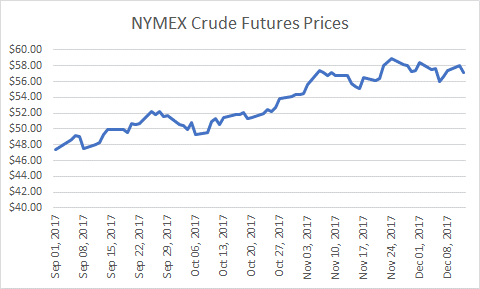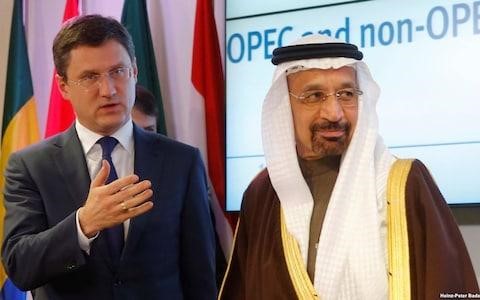
Why Oil Prices May Have Peaked
Crude oil futures peaked about a week before the OPEC meeting just below $59/bbl. Prices had been in an uptrend since October 6th, just before Hurricane Nate disrupted production in the Gulf of Mexico. There had also been indications by the White House that President Trump would soon deliver a speech explaining why he would not certify Iran’s compliance with the terms of the nuclear sanctions agreement. As a result, oil prices first rose as a result of the hurricane, followed by a risk premium due to the stand-off with Iran and expected extension for of the OPEC/non-OPEC deals through 2018.

Given the OPEC announcement on November 30th, which means that the deals are baked-into crude futures for 2018, the question is, where should prices go? Based on the factors below, I expect prices to trade lower. Continue reading "Why Oil Prices May Have Peaked"

